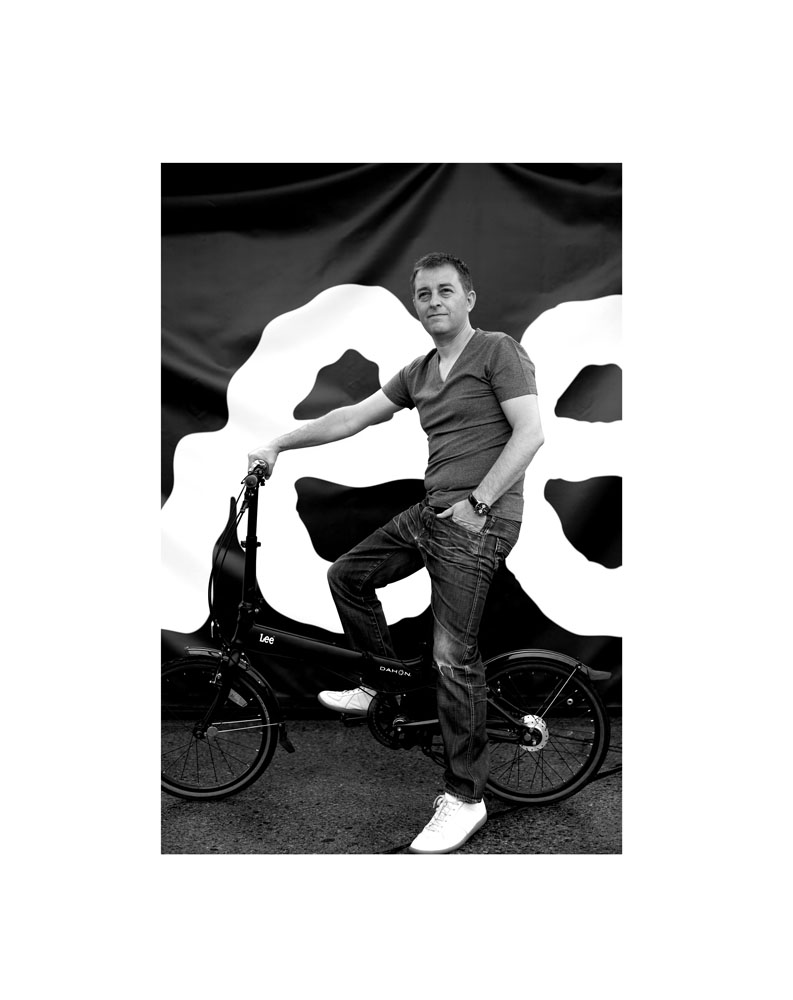
Johan de Niel is one of the few experts on denim and the only true person to devote their entire career to one brand. We met the vice-president of Lee Europe at the recent fashion tradeshow, Bread & Butter in Berlin. Cool guy, cool jeans.
The story of Lee started in 1889; When did your story with Lee begin?
My story starts in 1981; I started in the production department pattern making then went into production as an assistant to the production director at our manufacturing locations in Belgium and Europe. Then, from my production experience I went into sales and after went into marketing and did market research. I, then, worked on packaging projects and went into brand management and then finally went back home to Lee as a product manager. My role, then, grew into director of merchandising, and I recently became general manager and vice president.
So according to your experience throughout those two decades, what was the most important lesson you learnt from the market so far?
To stay true to whom you are.
Do you think that Lee follows this mentality?
Yes, for sure; we are celebrating our 120th year currently and this will be an incentive for us to re-look at what we were doing well in the past and make it contemporary for today and tomorrow.
How difficult was it to go back and try to re-invent and adjust Lee to the modernity of our times?
I think the nice thing about jeans is that they are a flexible kind of material and matter so it gives many opportunities. If you work with the right team you can easily turn that into something contemporary. The variety in jeans can be through the fit, through the details or the finish, or it can be a combination of them all.
So what constitutes good denim?
Good denim for me means denim that fits really well. Good denim exists out of multiple fits that address different body shapes. Quality is also very important, and you should feel comfortable in your denim because it will be your best friend for years to come.
Do you have a pair of Lee jeans that are your favourite model that you consistently buy?
I’m wearing a pair now; its one of my favourite’s for the simple reason that it’s been worn and torn for 7 or 8 years. It’s based on one of our original collections. The fabric was falling apart so I asked my stitching department to sew it together again so that I can continue wearing it because it is too personal to throw away.
Do you think you can be successful if you do not have a passion for denim?
No. The thing is denim follows three to five year cycles, it’s like surfing, the wave can take you up and then down and then you’re on top again. Anybody today can bring jeans to the market. It can be H&M, it can be ZARA; basically everybody does denim. But this is not a trend, I think you really stand out when you’re an expert and that is when people go back and ask why they are relying on the brand; because it’s good quality, you know what you are getting and at a good price which is also important.
So you have been at Lee for two decades, you must have experienced the downfall in the denim market recently. What is your opinion and view on this?
When we saw periods of downtrend we started to look at our denim brand and decided that it was time to step up our efforts and become better. Evaluate our USP and look at what we have to offer. From personal experiences it would be easy to say “I’m going to do casual pants, I’m going do something different and make some additional sales with my casual pants” but then you pay less attention and focus on being innovative with your denim. For example, female denim is under a lot of pressure today, it’s either a shape of legging or it’s really slim; you have dresses and skirts, all alternative forms of clothing at all types of price levels. We have now looked into a power stretch, a legging look and feel that we have translated into denim. We found it through being more versatile, Ιf your mind is set to try, follow the trends and to become more innovative with colours in denim, you kind of find a new attraction.
We know that you are basically based in Europe and that is your market of most concern, but what is the biggest market for Lee?
The biggest market is Italy.
But you have very strong competitors there?
Yes, as in every market you have some competition.
So other than Italy is there a secondary market?
It is between Germany, France, Poland and Spain – all of whom are at a similar level.
How about Greece?
If you look at the ratio from our market presence and the amount of units we sell, Greece is also one of our best markets.




